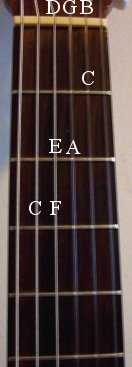![]()
I have a youtube channel with over 1000 Videos!
Music/tutorials
- Classical Guitar Home
- Classical Guitar Sheet Music
- Free sheet music in pdf form
- Guitar Store
- Book Store
- Tutorial
- For Beginners
- Free MP3's
- Instructional Books
- Starter Kit
- online tuning tool
- Guitarists
- Accessories
- CD's
- Spanish Guitar
- Spanish Classical Guitar
- Guitar Terms & Symbols
Guitars and More
- Spanish Guitar Music (CD's)
- Guitar Hangers
- Classical Guitars on ebay
- 3/4 size Classical Guitars
- Esteban Classical Guitar
- Bach for Classical Guitar
- Left Handed Classical Guitars
- Best Selling Classical guitar CD's
- Classical Guitar DVD's
- Classical Guitar Songs
- Classical Guitar Straps
- LaPatrie Classical Guitars
- Beatles for Classical Guitar
- Christmas Songs for Classical Guitar
- Classical Guitar Videos
- Classical Guitar Events
- Profiles in Classical Guitar
- Classical Guitar Strings
- Nylon Classical Guitars
- Classical Guitar Tuning
- Stringing the Guitar
- Video on stringing the classical guitar
- Classical Guitar Magazines
- Classical Guitar Making
- History of the Classical Guitar
- Classical Guitar words, terms and definitions
- Web Resources for buying Classical Guitars and related items
- Learning to Read Classical Guitar music
- Classical Guitar Songs
- Flavoring the Classical Guitar
- Classical Guitar on Fire
- Why Classical Guitar is a good instrument for children to learn
- How to advance quickly in your guitar playing
- Forget about learning TAB - Here's why
- Advice on buying a classical guitar
- A suggested repertoire for the beginner
More Stuff
- Will's Classical Guitar Articles
- Andres Segovia
- Yamaha Guitars, about them and the different series
- The Tuning Tool
- The Dictionary of Guitar sheet music terms and symbols
- List of Classical Guitar Societies you can join
- Boston Classical Guitar Society
- Classical Guitars on Amazon
- Classical Guitar Sheet music on Amazon
Will's Subjects
- Blacksmithing
- Bonsai
- Catapults
- Dioramas
- Fantasy Art School
- Goldfish
- Leathercrafting
- Military Dioramas
- Make Video Games
- Model Rockets
- Nature projects
- Origami
- Paper Making
- Paper Games
- Paper Projects
- RC Airplanes
- Science Projects
- Stained Glass
- Stamp Collecting
- Stop Motion Animation
- Tatebanko
- Terrariums
- Trebuchets

Hi, Thanks for visiting my website. My name is Will and if you have questions
or would like to
contribute projects or ideas you can contact me 


 Here are these 8 notes of the C scale on the guitar as I have played them in the sound clip.The D, G, and B notes shown above the white nut in the picture are open strings. This makes this scale pretty easy. Try it. Start with the First C then progress your way through the scale. Then go backwards. Don't worry, if you are new to this it will be difficult, but as you get better and practice more you will whip right through these scales.
Here are these 8 notes of the C scale on the guitar as I have played them in the sound clip.The D, G, and B notes shown above the white nut in the picture are open strings. This makes this scale pretty easy. Try it. Start with the First C then progress your way through the scale. Then go backwards. Don't worry, if you are new to this it will be difficult, but as you get better and practice more you will whip right through these scales. 
